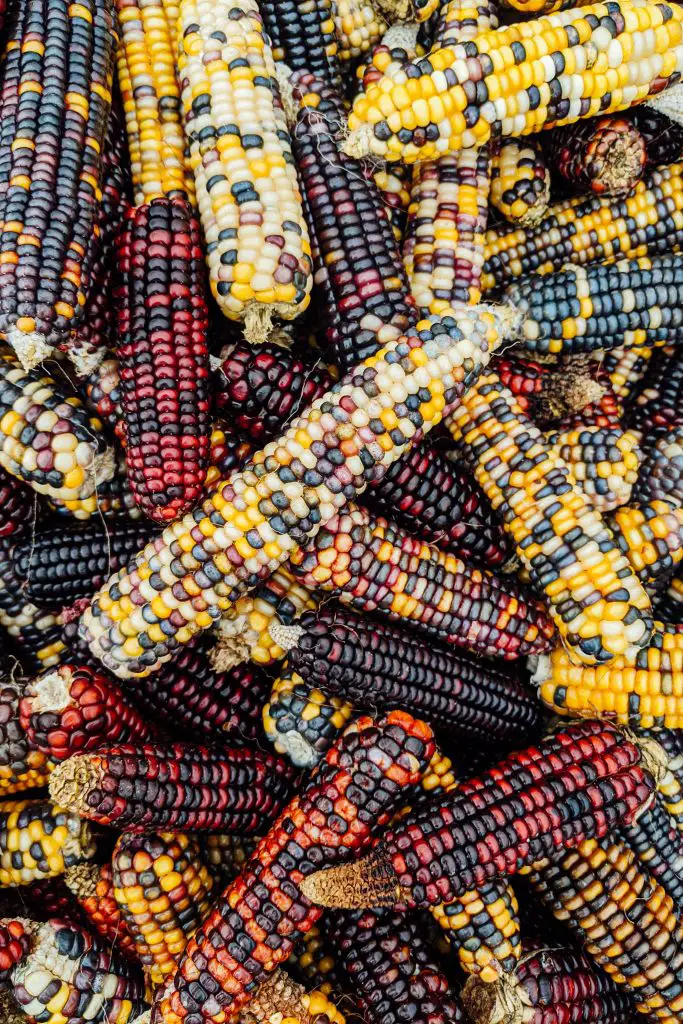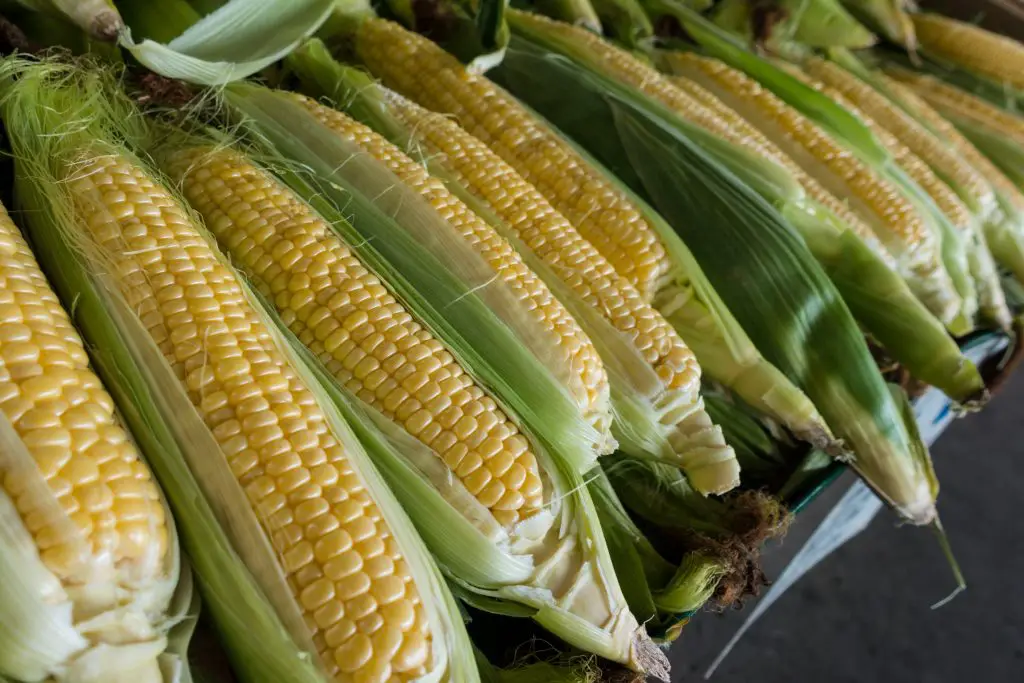Can You Harvest Corn More Than Once In A Season? Sweet corn is a popular vegetable to grow at home in your garden. It provides fantastically sweet cobs when eaten immediately after being picked. However, one common question that comes up is: Can you harvest the corn more than once a season?
Corn can only be harvested once in a season. Each stalk will produce 2 ears of corn per season. Once those ears have been harvested no further cobs will be produced. However, you can stagger your corn harvest by successionally planting seeds every 2 to 4 weeks until midsummer.
Staggering the sowing of seeds is very important if you want to maintain a constant supply because corn has a very short window in which to harvest the ears. If the corn is left for too long the kernels will begin to shrivel and the quality of the cob will deteriorate quickly.

How To Grow Corn And Maintain A Constant Supply
Corn is a relatively easy plant to grow and can be sown directly into the garden. However, to maximize the period over which corn can be harvested it is best to start at least the initial sowings of seeds in a seed tray.
The first planting of seeds should be put into the seed tray around 4 to 6 weeks prior to the last frost which in most regions will be in late winter or early spring. To really get the seeds going early, if you live in a relatively cold climate, it is best to use a heated propagation tray rather than just have a seed tray kept indoors.
The main advantage of the heated seed tray is that it will maintain a constant temperature for the seedlings day or night whereas if you have a seed tray indoors it is likely that the temperatures will fall in your house at night reducing the growth rate.
If you need to purchase a heated propagation tray the one we would recommend is the ipower germination kit because it has a removable seed tray which is advantageous because it is the part that is most likely to break over time. To see the latest price on Amazon click here.
Being able to replace it will extend the life of the unit substantially. The other important feature of this unit is it has a humidity dome which will allow the heat and the humidity to be controlled more accurately.
To plant the seeds fill the seed tray with good quality potting mix and plant one seed per cell at a depth of 0.5 inches (1 to 2 cm). Once planted the corn seedlings will appear approximately 7 to 14 days after sowing provided that there is sufficient heat and moisture.
If you need to purchase seeds we recommend that you visit seeds now because they are a company that specializes in heirloom variety seeds, it has a wide range, and it is relatively cheap. The majority of corn seeds sold at garden centers are hybrid seeds which means that they cannot be saved for the following year. To learn more about this click here.

The corn will need to spend 4 to 6 weeks in the seed tray before it is ready to plant out into the garden. During this time the seedlings need to be watered regularly to ensure that the soil remains moist.
Once the seedlings have reached a sufficient size they can then be planted out into the garden provided that the risk of frost has passed. The seedlings should be planted approximately 10 to 12 inches apart in a block rather than in a line. The reason for this is that corn is wind-pollinated which means planting in a block will help to increase the rate of pollination.
When planting the seedlings out into the garden they should be placed in a sunny location with rich, moist, and free-draining soil that has plenty of nutrients. If the soil is lacking nutrients then it is advisable to add a bag of compost before putting the seedlings in. Additionally, it is recommended that a thick layer of mulch be applied to the surrounding soil to help suppress weeds and retain moisture.
Once the plant is established there is little maintenance required other than to ensure that the beds remain weed-free and the plants are well watered, particularly, if there are hot dry spells.
If you want to maximize the output from your garden you can also consider companion planting the bed with pumpkins and also beans. This method, which was used by the native Americans, is known as the 3 sisters.
The reason for the name is that each one of the plants helps the other vegetables to grow. Pumpkins provide a ground cover while the beans increase the nitrogen levels in the soil helping all the vegetables grow and the corn provides a structure for the beans to climb up maximizing the output of all three vegetables.

Successional Planting Of Corn
To ensure that you have a constant supply of corn it is important to plant seeds every couple of weeks. This will ensure that you have corn ready to harvest at different times. However, it is important to note that in the early part of a season the sowings can be further apart because the growth rates are slower initially which means that planting 4 weeks apart is most likely only give you a difference of 1 or 2 weeks in terms of harvest, however, in summer it is advisable to plant your seeds closer together.
Harvesting Corn
The first sign that corn is ready to harvest will be that the white hairs at the top of the corn cob will begin to turn brown. At this point, it is worth checking whether the corn is ready to pick.
The easiest way to test this is to select one ear and peel back the out of layers to reveal the Cob. To test whether it is ready pieces one of the kernels to see if the liquid that comes out is milky. If it is milky then it is ready to harvest.
If it is not yet ready cover the ear up and leave it for a week or so before testing again. When doing the tests it is best to use the same ear to reduce the amount of damage that you need to do to your corn.
I hope you found this article useful and have great success with your corn. If you have any questions or comments please leave them in the section below.
Relevant Articles
Is It Too Late To Plant Sweet Corn?
Can You Save Corn Seeds For Next Year?
Is Corn Annual Or Perennial? Do I Need To Plant It Every Year?
10 Ways To Make Your Vegetable Garden Look Beautiful


